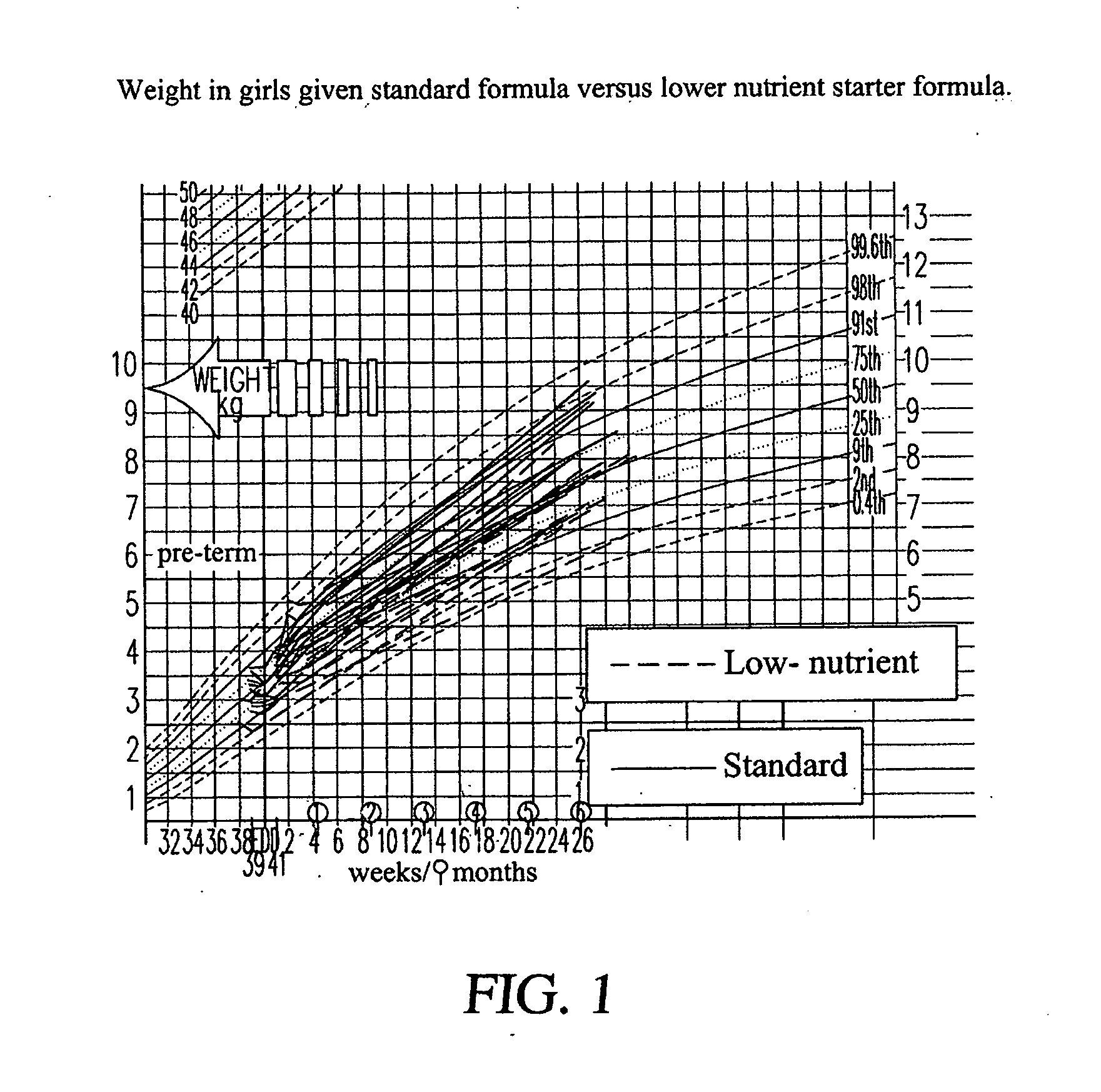Baby feeding formula and system
a formula and baby technology, applied in the field of infant formulas, can solve the problems of long-term adverse health effects in individuals, and achieve the effects of reducing the later risk of obesity, reducing the thickness of skin folds, and combating the greater risk of obesity
- Summary
- Abstract
- Description
- Claims
- Application Information
AI Technical Summary
Benefits of technology
Problems solved by technology
Method used
Image
Examples
example 2
[0100]The effect of avoidance of over-nutrition on Insulin Resistance.
[0101]The subjects were the same as in Example 1 and subjected to the same regime and trials and 32-33 split insulin concentrations (as a measure of insulin resistance was measured).
[0102]Sample size was estimated to exclude half a standard deviation in outcomes between randomized dietary groups in each of the trials and we required a maximum subsample of around 250 subjects from our original cohort to detect this difference (with two parallel trials) at 80% power and 5% significance; and a minimum sample of around 200 subjects for 70% power and 5% significance. A subset of 216 subjects, which met our minimum criteria, agreed to participate at our initial attempt at recruitment and was found to be representative of the original population. For comparison of a nutrient enhanced versus standard neonatal diet (trials 1 and 2 combined) this sample was sufficient to detect a 0.4 SD difference in fasting 32-33 split pro...
example 3
[0122]The present study tested the hypothesis that a formula with a macronutrient composition lower than conventional formula given for the first week of life would lead to slower weight gain. The study aimed to assess both the tolerance of this new formula and its effects on patterns of early growth. The principal efficacy outcome was the rate of weight gain from 1-7 days of age with the expectation that babies randomized to the lower nutrient formula would have a slower rate of weight gain—more like a breast-fed baby. An appraisal of the published data (see tables in the study protocol) from breast-fed infants suggests that colostrum has slightly higher protein content when compared to formula (2-3 g / 100 ml in colostrum in the first week compared to 1.5-2.0 g / 100 ml for formula-milk). However, early breast milk differs markedly in energy density (estimated at 44 kcal / 100 ml for colostrum compared to 67 kcal / 100 ml for formula). For the supply of energy in the first week, there are...
PUM
 Login to View More
Login to View More Abstract
Description
Claims
Application Information
 Login to View More
Login to View More - R&D
- Intellectual Property
- Life Sciences
- Materials
- Tech Scout
- Unparalleled Data Quality
- Higher Quality Content
- 60% Fewer Hallucinations
Browse by: Latest US Patents, China's latest patents, Technical Efficacy Thesaurus, Application Domain, Technology Topic, Popular Technical Reports.
© 2025 PatSnap. All rights reserved.Legal|Privacy policy|Modern Slavery Act Transparency Statement|Sitemap|About US| Contact US: help@patsnap.com


